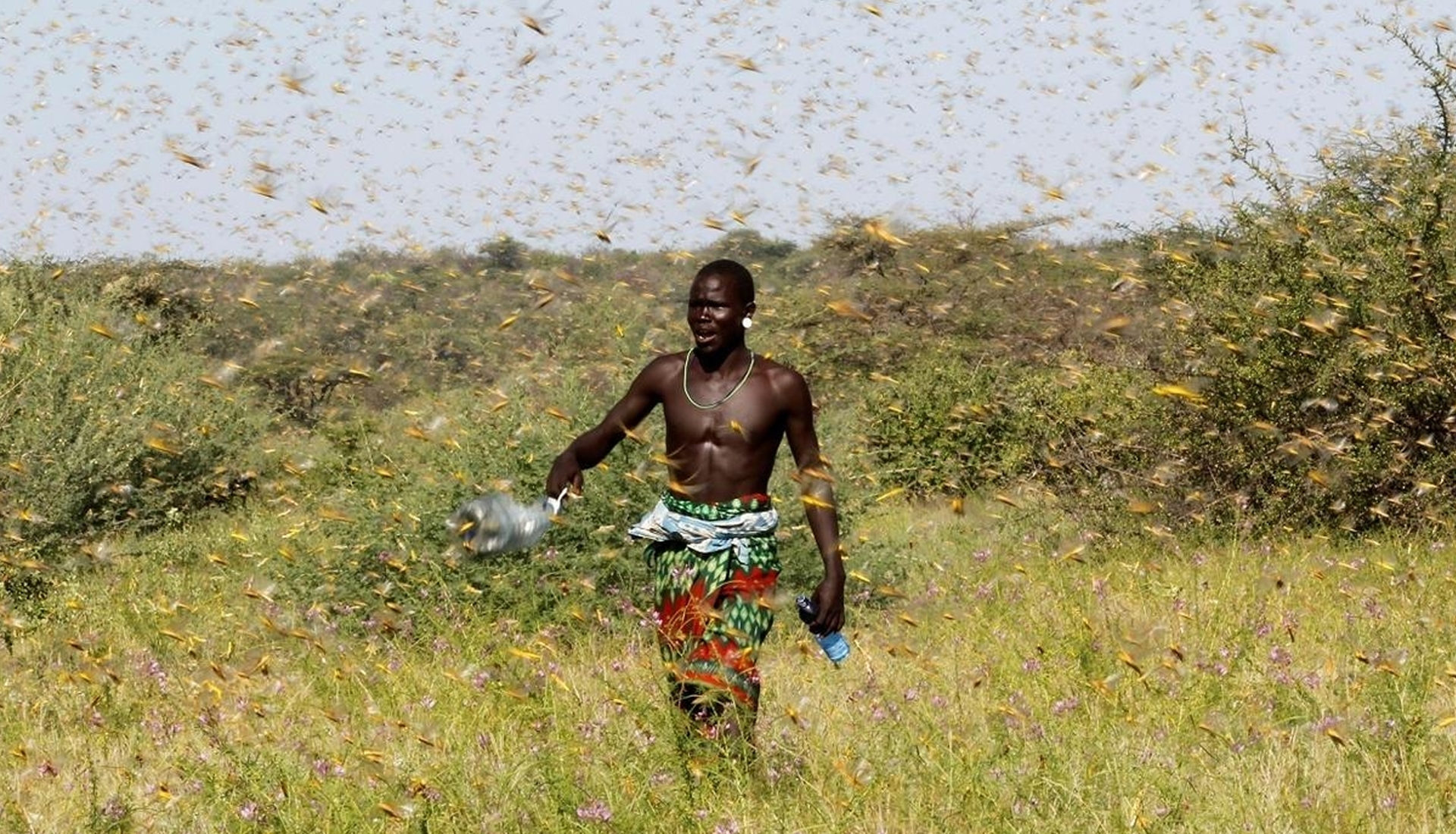A locust invasion is currently devastating the crops of one of the world’s most impoverished regions.
Climate change has given us many fun new experiences. First, it gave us rising sea levels, making regions uninhabitable. Then it increased wildfires in disaster prone regions, making them uninhabitable. Then it increased hurricanes and droughts, causing, you guessed it, uninhabitability. Now, many of these weather events have combined to create the conditions for, drumroll please… a devastating plague of locusts in East Africa, proving that climate change’s portfolio of disastrous consequences can always get more diverse.
Droughts, followed by an unusually high number of cyclones, created a perfect hospitable environment for the tiny pests, who have descended voraciously on East Africa in numbers not seen in decades. Warmer seas create more rain, wakening dormant eggs, and cyclones then distribute them.
Countries in east Africa are racing against time to prevent new swarms of locusts wreaking havoc with crops and livelihoods after the worst infestation in generations | Read more: https://t.co/MZ6MVK6WAq pic.twitter.com/uYZm5ZUtrt
— RTÉ News (@rtenews) February 27, 2020
The locust swarms are a ticking humanitarian time bomb, decimating crops, fuelling food insecurity, and potentially exacerbating conflict in the already precarious region through resource stress. The inability for East Africa to cope with a crisis of this magnitude is obvious and very worrying: Kenya is temporarily out of pesticides, Ethiopia needs more planes to distribute pesticides, and Somalia and Yemen, torn by civil war, can’t guarantee exterminators’ safety in certain afflicted areas.
Swarms typically contain between 40-80 million locusts per square kilometre, and they’re able to travel up to 150 kilometres a day, consuming everything in their path. A single square kilometre swarm can eat as much in a day as 35,000 people.


















